Thursday, February 19: This morning, I enjoy a buffet breakfast in the courtyard of my hotel, the Floral Breeze. It’s a lovely spot with a pool and gardens, and luckily it’s not too hot at this time of year.
At breakfast, I see a couple of groups from yesterday’s 12-hour boat ride down the Ayeyarwady, and we acknowledge each other as having shared a common experience.
I hire a car from the hotel to take me to the most important temples in Bagan from 9 a.m. until after sunset. The charge is 35,000 kyat, around $35. Little do I know we will be on the go all day and I will stop at 20 temples. I don’t mind because I want to make sure I see the most famous temples. Tomorrow, I plan to rent an electric bike and ride in a more leisurely fashion through the plains.
Bagan’s kings commissioned over 4,000 Buddhist temples in a 230 year period ending in 1287 with the Mongol invasions. While the 11th- to 13th-century wooden buildings have long disappeared, the brick and stucco temples are all that remain of their grand city. During this time, the region’s beliefs transitioned from Hindu and Mahayana Buddhist beliefs to the Theravada Buddhist beliefs that have since defined Myanmar. King Anawrahta, newly converted by a monk sent by Manuha, the Mon King of Thaton, took his religious beliefs to a feverish level, going on a building spree until “The First Burmese Empire” was created (Lonely Planet Myanmar (Burma)).
Historians disagree about what caused Bagan’s rapid decline in the 13th century. Some believe it was the Mongol invasions sent by Kublai Khan, and others believe that threats from China sent Bagan’s rulers into a panic. Frequent earthquakes, general weathering and neglect also contributed to the city’s decline (Lonely Planet Bagan).
Our first stop today is Nagayon Guphaya. The main Buddha image is double life-size and sits under the head of a huge naga (dragon serpent).
My driver takes me to the entrances of the temples and leaves me to explore. He is wearing the male version of the longyi (skirt), called paso, with a button-down shirt and a suit jacket, a little too much for the rapidly warming day. His teeth are quite horrible and stained as he is constantly chewing betel and spitting it out the window and onto the ground.
We go next to Nanpaya Temple. According to tradition, it was used as the captive Mon king Manuha’s residence. Built of brick and mud mortar and surfaced with stone, it is square in plan with a porch projecting on the east face. Like other earlier temples at Bagan, it has perforated stone windows to admit light into the building (Myanmar Tours US: Nanpaya Temple).
Flanking the sanctuary in the main building are four stone pillars. On the sides of each of them are carved triangular floral designs and the figures of the Brahma holding lotus flowers in each hand.
Manuha Paya sits in Myinkaba village. Though it looks modern, it dates back to 1059. It’s named after Manuha, the Mon King from Thaton, who was held captive here by King Anawrahta.
In the front of the building are three seated Buddhas. They all seem too large for the small spaces that enclose them, representing the stress and endurance the king had to endure (Lonely Planet Myanmar).
In the back of Manuha Paya is a huge reclining Buddha with a smile on his face. He is supposedly in the act of entering parinibbana (final passing away), showing that for King Manuha, death was the only release from his suffering (Lonely Planet Myanmar).
We go next to Gubyauk Gyi, or Great Painted Cave Temple, built in A. D. 1113 by Prince Yaza Kumaya. It’s a cave pagoda with a gold finial and a gold image of Buddha. Inside, it’s very dark and gloomy, and there are richly colored murals painted on the walls that are thought to date to the time of the original construction.
When I go inside, a man holding a lamp takes me around the temple and tells me all the stories of Buddha that are painted on the walls. The stories are fascinating, as are the murals.
The man who told me the stories of the paintings in Gubyauk Gyi accompanies me next door to Myazedi, or the Emerald Stupa.
On a four-sided pillar in a cage between Gubyauk Gyi and Myazedi is the Myazedi Inscription. Inscribed in 1113, it is the oldest surviving stone inscription of the Burmese. The inscriptions were made in four languages: Burmese, Pyu, Mon, and Pali; they all tell the story of Prince Yazakumar and King Kyansittha. It is linguistically and historically significant because it shows the Pyu cultural influence on Bagan. The Myazedi inscription serves as a kind of “Rosetta Stone,” allowing for the deciphering of the written Pyu language (Wikipedia: Myazedi Inscription and Lonely Planet Myanmar).
The man who has been explaining the murals’ and the Myazedi inscription’s significance shows me some Buddha images representing the seven days of the week. He tells me I should find the one representing my birthday and pour water over it, saying a prayer or a wish. I pour water over the Tuesday Buddha.
From what I’ve read about the seven Buddha images, the Tuesday image should be a reclining Buddha, but this one isn’t.
The man, who has been very kind and informative, and who speaks excellent English, asks me if I will come to his shop to have a look at his sand paintings. Ah, now I know why he’s been so generous with his time. He shows me the process of sand painting, and then asks me if I’d like to buy one of his paintings. This is my first encounter with sand paintings, and I like them very much. In fact, I buy one for 15,000 kyat, and then another for 12,000. Later, as I see vendors galore selling sand paintings, I realize I jumped the gun and probably could have gotten them for a lot cheaper. Oh well, the man really was great spending so much time explaining everything to me. 🙂
Now my driver takes me to Old Bagan to explore more of Bagan’s thousands of temples.



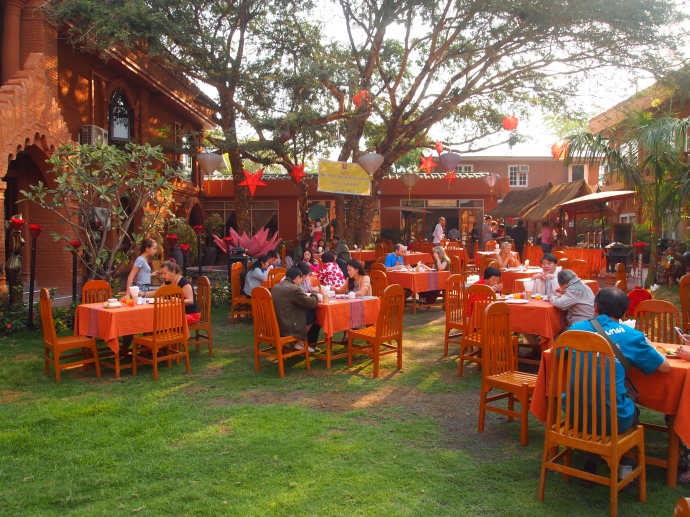


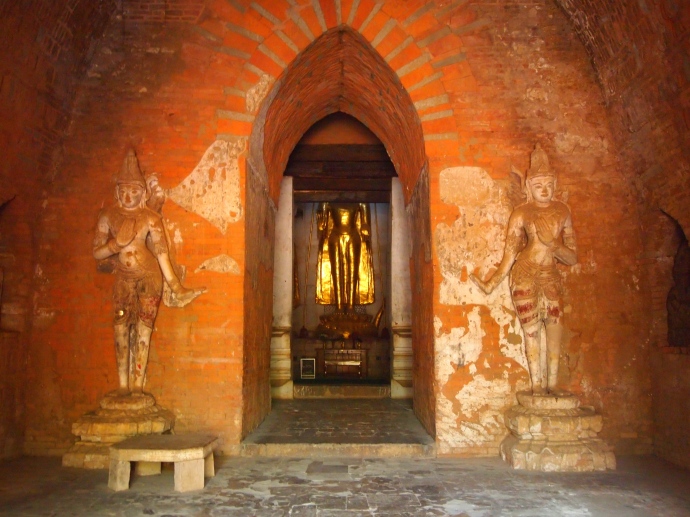
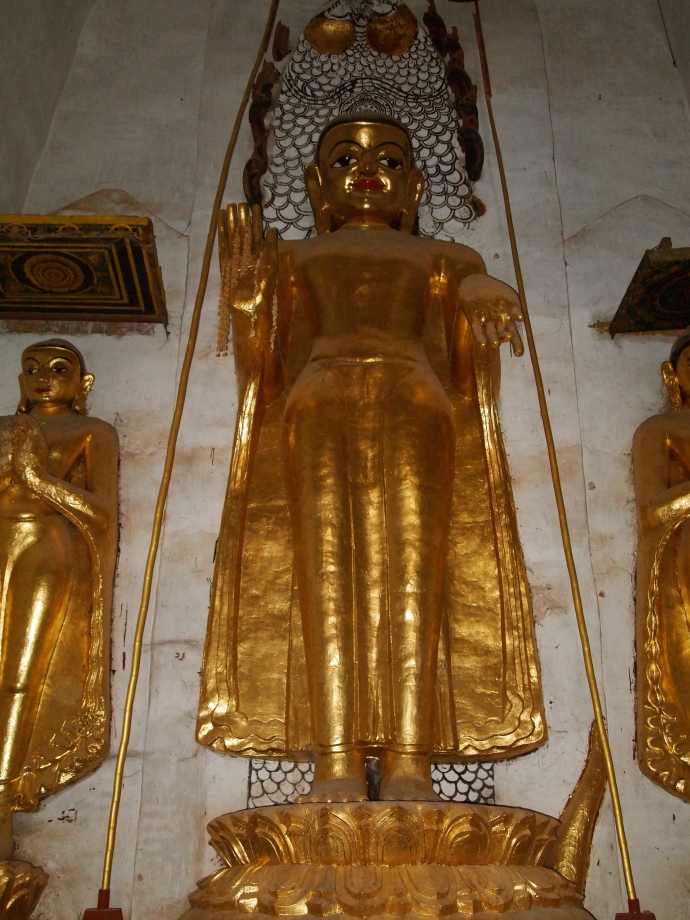












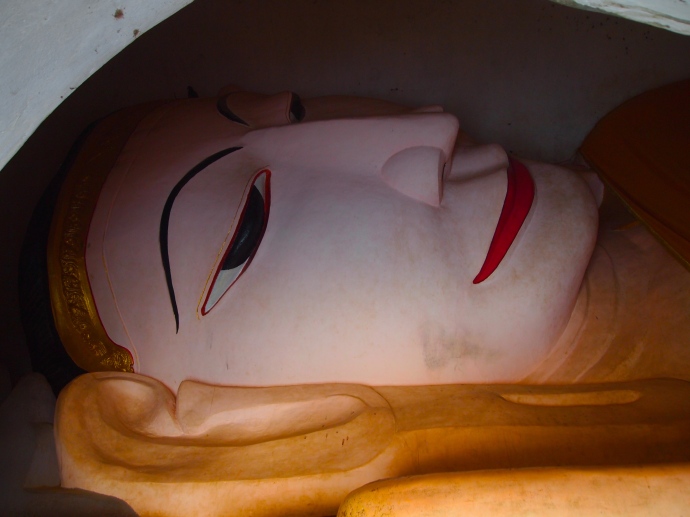
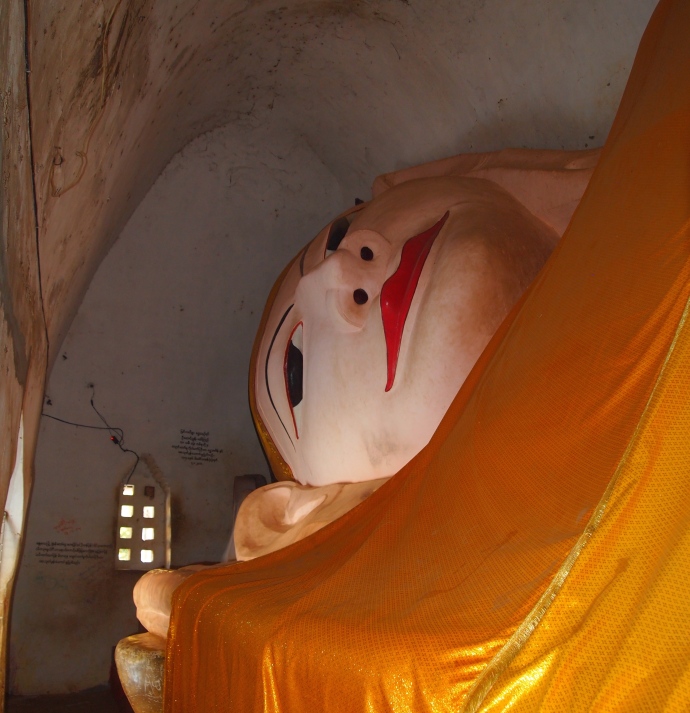


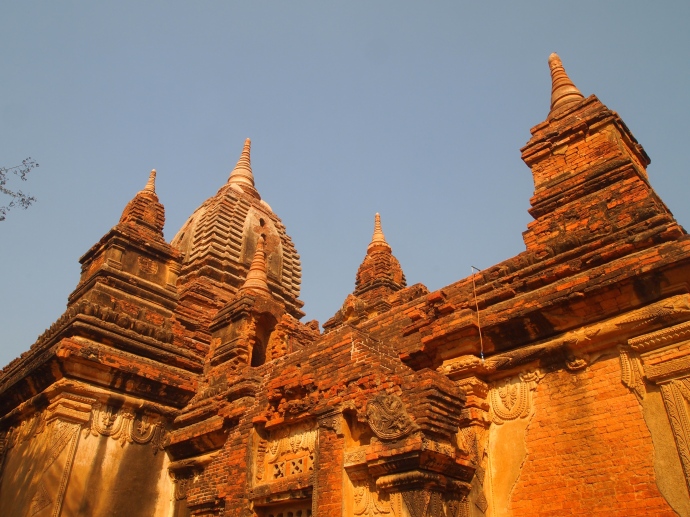

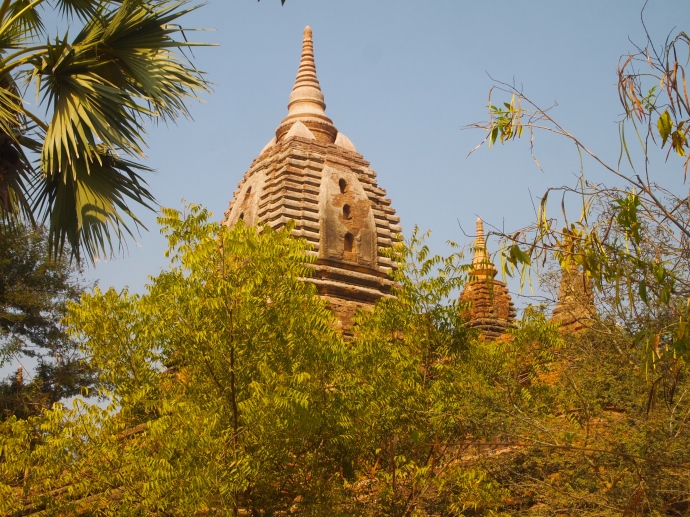











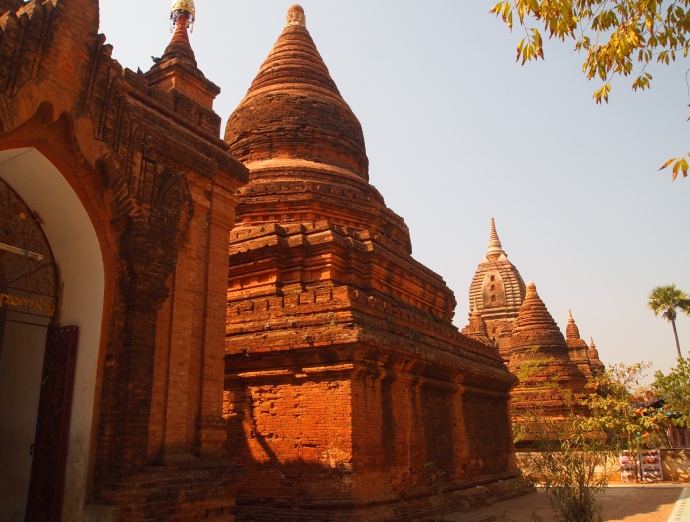

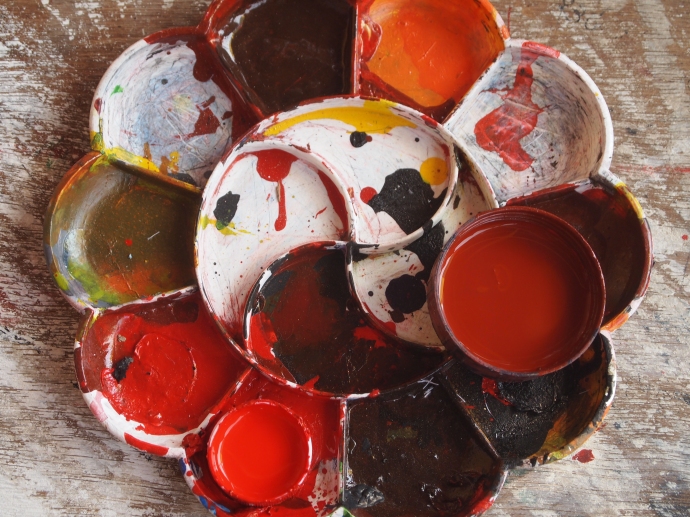


I know I’m behind commenting on your posts – sorry about that – but great as usual. I think buying the sand painting was a good investment as he did give you a good tour. Money is a limited resource, but so is your time and effort.
Nancy
Oh gosh, Nancy, please don’t apologize. I’m so very behind on visiting everyone’s blogs. I’m saving them all in my inbox, as I do hope to get to them eventually. It’s probably most likely to happen when I get home and don’t have to deal with slow internet due to WordPress being blocked and having to go through a VPN. I’m happy to have bought the sand paintings from that nice and knowledgeable man rather than from some random stranger. I think it was worth it too, even if I was taken to the cleaners! 🙂
Twenty temples, that’s incredible!
And that’s just a drop in the bucket compared to the thousands of temples just in Bagan, not only all around Myanmar, Gilly! 🙂
I think I am all templed out Cathy! But I do like the carving in the Nanpaya Temple of Brahma holding lotus flowers. Not long now before you leave China. It has been a fascinating experience for you and for us travelling vicariously with you. I do hope you buy at least one of those delightful lanterns before you go 😀
If you’re already all templed out, Jude, then I think you will be tired of Myanmar before long because I have literally thousands of pictures and Myanmar has thousands of temples! I’ve only just begun!! Yes, it’s only 23 days before I leave. I still have a heavy load of final papers to mark before I leave. I dread receiving them all on July 3. It’s been a great experience over all and I’m glad I spent a year living here, which, though difficult at times, was a great immersion in the culture. Much better than travel, which just skims the surface of a place. I went to Yangshuo a couple of weekends ago, and I did end up buying two lanterns!
The temples are all quite different. I love the ornate Emerald Stupa. Are they actually used as places of worship or just relics of the past? Those sand paintings will be a lovely reminder of your time in Myanmar. Not many days left now….
Actually, many of the temples in Bagan are still used as active places of worship, Pauline. I’ll be happy to have my sand paintings once I return home. I always love to have decorative items from my travels to remind me of my adventures! 😊
It’s fascinating how this culture grew up, Cathy, and so different from our Western life. I don’t think I expressed that very well but you probably know what I mean. 🙂 So much beauty, and you smiling away against a blue sky in your pretty blue top. I like this post 🙂
I chased around the blogs a bit trying to work out where (or if!) you were currently writing, and discovered this one that I haven’t read. I’ll probably have to come back because there’s such a lot to take in. You could make the most beautiful book (or six!) from it all Cathy.
Hope things are going to plan now that you’re back and ‘settled’ a bit. No doubt you’re looking forward to Fall big time 🙂 🙂 I’m looking forward to Tavira at the end of this month.
Thanks for searching for me through all my blogs this morning, Jo. Sorry, I’ve been a little slow to post anything, although I’m hoping by today to post about my first day in Joshua Tree with Rosie. You’d think with all the newfound time on my hands, I would be more organized in my use of it, but it seems I have a million household projects and errands to run – I seem to always be in my car now that I’m home! I also am spending a lot of my time exercising, counting calories, etc, in my efforts to lose the 7 lbs I put on in China!!
It’s quite hot and humid here in Virginia, which has made me not at all eager to get outside to explore. Fall will be here before long, and I do look forward to that, despite that CELTA course which will take up all of my time for one intense month beginning September 21. I also need to do quite a bit of preparation for that course. All of that will be during the best part of the fall weather, so sadly I’ll miss much of my favorite part of the season, although I will be finished with the course just in time for my 60th birthday!! 🙂
I hope to get more organized with my time and get on a more regular blogging schedule before long. I’m sure you are looking forward to Tavira; it should be lovely at that time of year.
I have hardly posted anything about Myanmar; just the sheer number of pictures I have to edit is overwhelming. However, it was my favorite trip during my year abroad, so I will have to get to it soon, before it all becomes a faded memory!! Thanks for your kind words. Hugs. xxx
60! Just a youngster! 🙂 🙂 Take care, Cathy!
Haha, yes, I’ll keep on believing that as long as possible, Jo! 🙂
I saw in the Reader you have a post up, Cathy. I’ll get there eventually 🙂